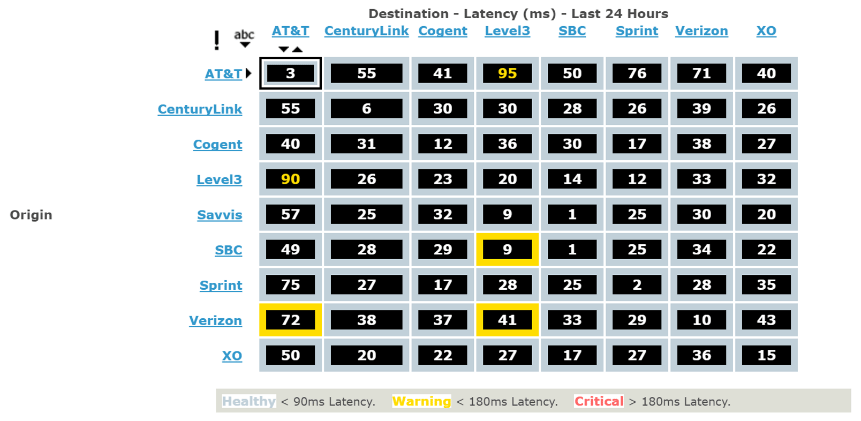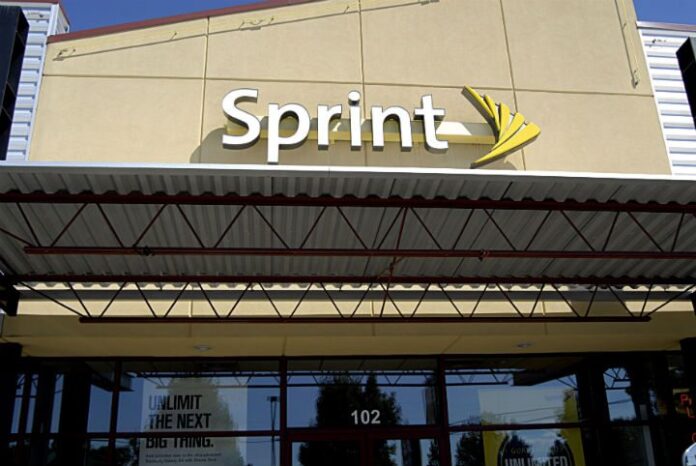Jim Patterson tackles the latest Sprint results and lays out 3 ways in which the carrier can regain its standing in the market
There’s a lot to cover with Sprint’s earnings. Most importantly, they eked out 56,000 postpaid net additions (22,000 of which were phones), which translates into 0.18% growth (in contrast, T-Mobile US grew their branded postpaid customer base by 3.3%, or 18-times faster). Not exactly a marker that announces a comeback, but better than Verizon Wireless and AT&T Mobility phone net additions.
Sprint has purchased another year through a combination of collateralized loans, favorable lease financing terms and dramatic cost reductions. Their head is above water, but that’s about it. Proclaiming a comeback is not only premature, but incorrect as the headwind of increased (lower average revenue per user) postpaid tablet churn needs to be offset by increased smartphone additions. Sprint has no AT&T Mexico or Go90 to point to: high ARPU smartphone growth is the only solution to Sprint’s problem.
In last week’s column, we spent some time discussing what events would need to transpire to cause T-Mobile US to stumble. We discussed spectrum/capacity, increased competition from Comcast and the cable industry as a whole, and from more activist regulation. Admittedly, it’s hard to concoct the scenario that causes T-Mobile US to weaken.
Contrast that with Sprint. Everybody loves the underdog and wants to see them succeed. But it’s just as hard to craft an equation that results in Sprint growing at T-Mobile US’ rate as it was to write last week’s column. How can Sprint regain its brand and get on the right track?
Focus on data speeds
No doubt, Sprint’s Network Vision initiative is driving Sprint’s voice leadership. We have looked extensively at the RootMetrics data (all 125 markets with a rolling six-month view) and Sprint either wins call quality or gets real close (within three points out of the 100-point scale) in 86% of the markets. That’s a very respectable figure. But, Sprint is performing equally poorly with network speeds, with a material difference between Sprint and the winner (more than three points) in 91% of the markets. In fact, Sprint has only won five markets of the 125 measured by RootMetrics over the past six months: Corpus Christi, Texas (thanks in large part to the 2014/2015 Dish fixed wireless trial); Cincinnati; Denver; Houston; and Las Vegas.
Improved data speeds are going to be needed to retain the current base. Sprint has attracted many bargain hunters with 50% off service rates and attractive lease options, but what will keep the base from moving back to their previous carrier? And what will compel previous Sprint customers to return? One answer: data speeds.
When Sprint can prove (hopefully through word-of-mouth testimonials) that their data network can perform consistently (and geographically) better than T-Mobile US and Verizon Wireless, then their larger competitors should get worried. They have done this in five markets and have 120 left to go.
Have a benchmark differentiator that others cannot (easily) replicate
We talked about this when we put together the 2016 “to do” list for Sprint. The carrier needs a “push-to-talk” equivalent for this decade. More than a gimmick or headline for a commercial – something that attracts customers but also solves a pain point. Here are two that we think might be worth exploring:
1. Develop a postpaid retail relationship with Xiaomi to be their flagship phone provider in the U.S. The Chinese company has been very successful in its home country, but overseas growth has been elusive. They received very strong reviews on their Mi 5 smartphone, which retails for $260, and their Mi Pad 2 has seen extremely strong demand in a very weak tablet market. Get a little bit of exclusivity, and tune the device to work particularly well with Sprint’s 2.5 GHz network. The result would be a great device with minimal lease payments (good for all balance sheets) and an association with the challengers.
2. Eliminate the device addition fee for all customers. This “fee free” component would be a body blow to the industry and present Sprint as a viable alternative to Verizon Wireless and AT&T Mobility. Shown nearby is AT&T Mobility’s current fee structure: each new device carries a $10 to $30 monthly fee in addition to data usage. Does the carrier incur any material additional costs to add a device? No. Would a “fee free” structure be easy for Verizon Wireless and AT&T Mobility to replicate without significant economic harm? It’s unlikely they would match it right away, and T-Mobile US does not have a shareable data plan to match Sprint’s offer. Would this allow Sprint to have a competitive headline rate and still grow profitably? Absolutely. Sprint could build their future around the connected world with a commitment to no device add-on charges. It’s this decade’s PTT.

Sell the Internet backbone while there is still time
Sprint is a fundamentally different company than it was two, five or 10 years ago. While they continue to report wireline division earnings on a separate basis, you would be hard pressed to find a wireline organizational chart in Overland Park, Kansas. Sprint has a world-class IP backbone, which is being constrained by shrinking capital budgets. As the nearby chart shows, SprintLink performs extremely well against its peers. While its role in the Internet community is not what it was a decade or two ago, Sprint is still viewed as a legitimate and independent authority on routing, address management and other critical infrastructure topics. Others need Sprint’s capabilities and would pay for their embedded base. Sell it now, before it is too late.

There are more ways that Sprint could create competitive differentiation, and they are taking a lot of steps in the right direction with third-party network maintenance, software-based network functionality (although small cells still require fiber) and personalized self-care solutions.
Bottom line: Sprint is in fourth place and they need to plan for a future where they are in third or second place. The network is not ready to be scaled nationally, but could be in certain markets by the end of the year. The LTE network reaches close to 300 million potential customers, but Sprint’s continued dependence on CDMA as a backup will hinder their ability to compete against Verizon Wireless (who could introduce an LTE-only phone as early as 2017). Sprint needs to get creative and take risks. Otherwise they will become the wireless equivalent of DSL to the telecom community (good, but not good enough).
Thoughts on cable performance
It’s great being Comcast in 2016. Video is stable (Comcast actually grew video subscribers from 23.375 million in Q1 2015, to 24 million in Q1 2016, with minimal loss in ARPU), and high-speed Internet continues healthy growth (1.4 million annual and 438,000 sequential growth, while rival AT&T shrunk by 250,000 over the same period). Business services remains on a roll (17.5% year-over-year growth) and segment revenues should top $6 billion in 2016, even as they are just getting started with medium and enterprise customers.

Everything is coming up roses for the nation’s largest cable company and the best part of it is operating cash flow. Comcast’s cable unit generated a whopping $19 billion in OCF for 2015, and the first quarter of 2016 would seem to indicate that it’s going to be a slightly better year. In comparison, AT&T generated $7.9 billion in cash flow in the first quarter from operations, but that figure includes their wireless unit (Verizon Communications’ wireline earnings before interest, taxes, depreciation and amortization is less than $2.3 billion quarterly). It’s likely Comcast is now the most profitable (quantity, not margin percentage) wireline operator in the U.S. Concast enjoys low leverage relative to their peers, and has just under $6 billion in the bank for the 600 MHz spectrum auctions. Bottom line: It’s great to be Comcast.
The rest of the cable industry is going through a massive consolidation through the rest of 2016. This would seem to open the high-speed Internet door for Verizon, AT&T, Frontier and CenturyLink: use the disruption created by cable consolidation to increase telco share of decisions. Traditional telcos have their own issues, however: Verizon strike; Frontier’s transition after acquiring Texas, California and Florida FiOS properties from Verizon, and CenturyLink’s overall turnaround efforts make the opportunity to quickly seize market share more complicated.
Like Comcast, each of the cable companies are growing business services (Charter’s grew at 11.9% annually, while Time Warner Cable’s grew at 13.4%) and high-speed Internet additions were good (in fact, the combined Charter/TWC/Bright House Networks added more high-speed Internet subscribers than Comcast). Based on the earnings reports to date, it’s likely that cable’s share of total HSI additions was very close to 100%.
Without a doubt there will be threats to the current model. Hulu is going to come out with a live streaming service similar to (or better than) Sling in 2017. This will require more powerful modems and many bandwidth upgrades. As ultra-high definition proliferates (it needs a constant 25 megabits per second, according to Netflix), the pressure to upgrade will continue to accelerate. This is the push and pull of being a cable operator: how much for the bandwidth upgrade versus promoting the current video scheme? Can Hulu market its over-the-top service better than cable? And what about caps (and the government’s response if they are triggered too often)?
Bottom line: Even with the turmoil of consolidation, the cable industry is in the catbird’s seat. They should aggressively push DOCSIS 3.1 as their standard and charge customers the premium monthly service fee it deserves (and encourage customers to purchase their own modem if that is their preference). After the “shiny new thing” hype that is OTT has died down, most customers will see OTT expands and personalizes content options (primary benefit) while saving some money (secondary benefit). Like all hardware transitions, however, the Hulu effect will take three to five years to fully materialize. Until then, the good times will keep rolling.

Jim Patterson is CEO of Patterson Advisory Group, a tactical consulting and advisory services firm dedicated to the telecommunications industry. Previously, he was EVP – business development for Infotel Broadband Services Ltd., the 4G service provider for Reliance Industries Ltd. Patterson also co-founded Mobile Symmetry, an identity-focused applications platform for wireless broadband carriers that was acquired by Infotel in 2011. Prior to Mobile Symmetry, Patterson was president – wholesale services for Sprint and has a career that spans over 20 years in telecom and technology. Patterson welcomes your comments at jim@pattersonadvice.com and you can follow him on Twitter @pattersonadvice. Also, check out more columns and insight from Jim Patterson at mysundaybrief.com.
Editor’s Note: The RCR Wireless News Reality Check section is where C-level executives and advisory firms from across the mobile industry share unique insights and experiences.

